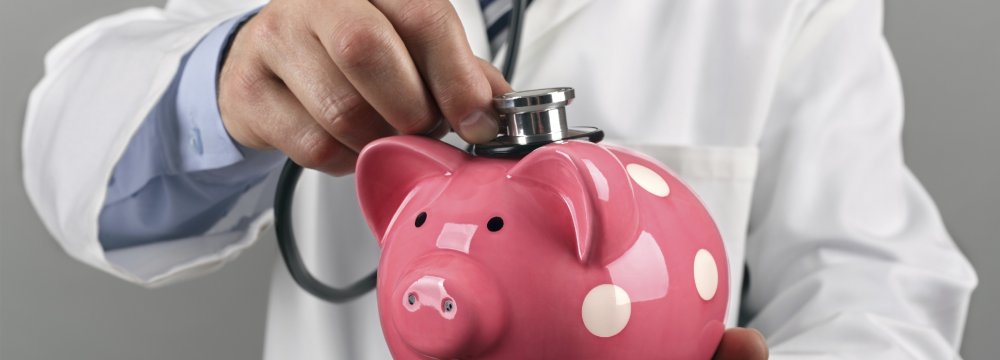An estimated 2.4% of households are facing unbearably high health costs, according to the Health Ministry spokesman.
Catastrophic health expenditure, or CHE, is defined in Iran as payment for health service that is more than 40% of a household’s monthly expenditure.
“Approximately 2.4% of all households are facing catastrophic health expenditure,” ISNA quoted Iraj Harirchi has saying.
He added that 10% of Iran’s population will also be facing CHE “if their healthcare expenses exceed 430,000 rials ($11) per month.”
Health authorities and lawmakers are concerned with rising healthcare costs and are trying to find ways so that ill health does not lead to extreme financial burden and subsequent impoverishment.
According to the recent figures, per capita healthcare expenditure of an average family constitutes 7% of the total household expenditures. The latest report by the Central Bank of Iran puts gross expenditure of an urban household at $870 (33 million rials) per month.
According to health official, people—in particular low-income households—can be protected from CHE by reducing the health system’s reliance on out-of-pocket payments.
Increasing access to and availability of health services is critical to improve health among poor households.
“Around 2,450 physicians were sent to underprivileged rural regions in the last fiscal (ended in March),” Harirchi said.
But better healthcare availability means people will spend more, which is why risk protection policies such as subsidizing healthcare services for low-income families, are necessary, the official added.
An analysis of 108 surveys in 86 countries has revealed that catastrophic payments are incurred by less than 1% of households in some countries and up to 13% in others. Up to 5% of households are pushed into poverty after illness strikes, the World Health Organization said.
According to Harirchi, about 22% of household healthcare expenditure is related to dental care services. Insurance companies and the government schemes hardly contribute to dental healthcare.
To make up for that, the ministry has taken measures such as administering fissure sealants to preschoolers and raising public awareness about dental hygiene.
“Taking preventive measures that help reduce dental and oral problems is the best strategy,” he said.
Out-of-Pocket Payments
Health authorities maintain that with the implementation of health reforms, people’s out-of-pocket payments for healthcare declined from 52% to 40%. Out-of-pocket expenses for medical care are not reimbursed by insurance companies.
Out-of-pocket payments for health can compel families to bear prohibitive costs, which in turn can push them into poverty, according to the WHO. The need to pay out-of-pocket can also imply that many households do not seek care when they need it.
Although the reduction in out-of pocket payments has been significant for Iranian households, it is still high compared to many countries. Currently, the figure is 15% in Turkey, 39% in Iraq, 70% in Afghanistan, and 11% in the US.
While it is 49.9 % in Cyprus and 45.8 % in Bulgaria, a household’s out-of-pocket payments made up more than one-third of the total healthcare expenditure in Greece and Latvia. France (7.2 %) is the only European Union member state where direct payments for healthcare accounted for a single-digit figure in healthcare expenditure in 2016. Other EU members registered a figure in the range of 10–15%, according to the European Commission.






Add new comment
Read our comment policy before posting your viewpoints